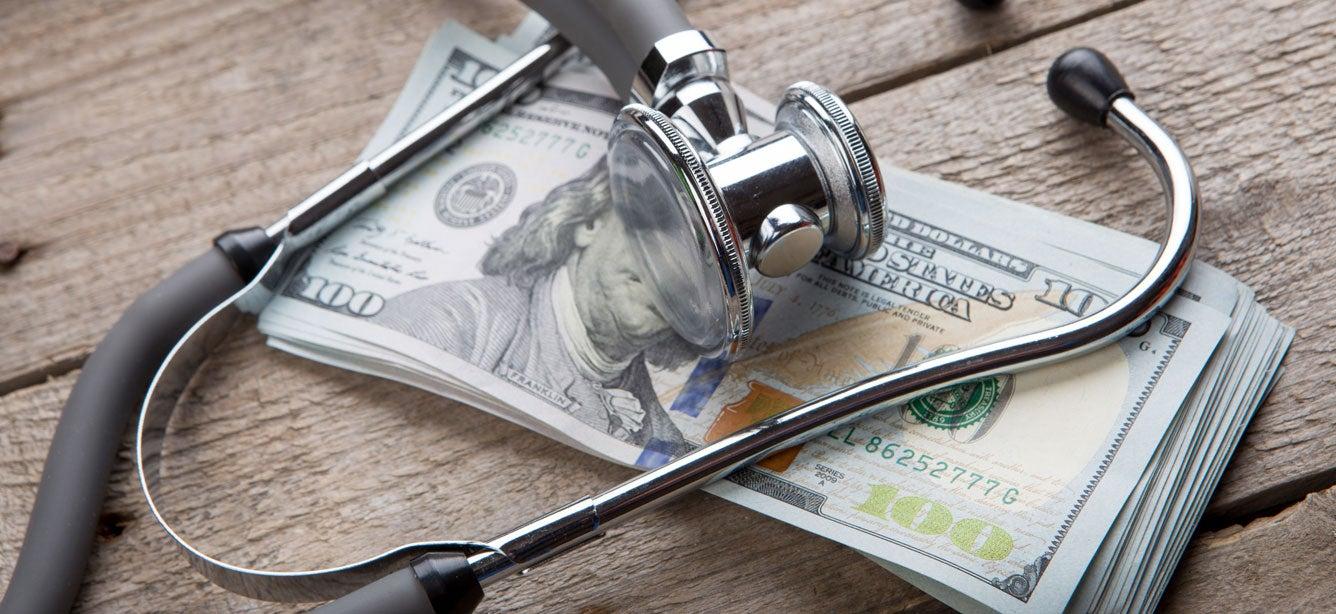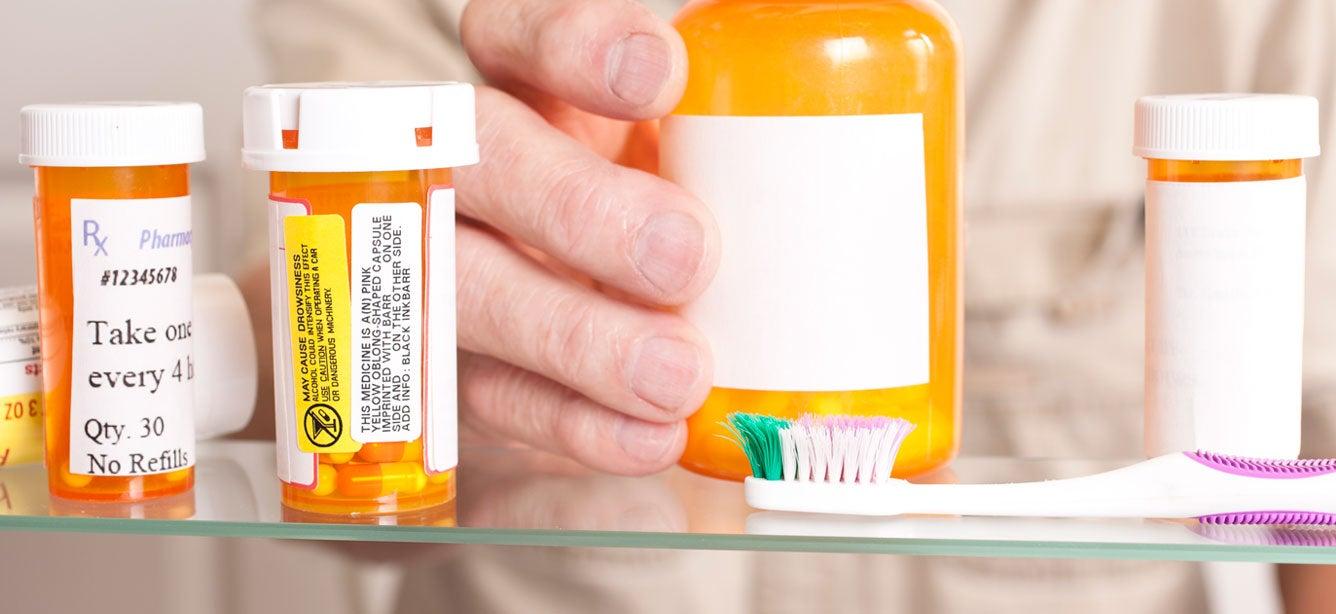Medicare Part D Prescription Drug Coverage: What Older Adults Need to Know
7 min read

Original Medicare (Parts A and B) covers doctor’s visits and hospital stays. But what about the prescription drugs you need to stay healthy? That’s where Medicare Part D comes in. This is the part of Medicare that can help you pay for prescription drug coverage. You can sign up for it if you have Part A or Part B—you are not required to have both.
How does Medicare Part D prescription drug coverage work?
- While Part D is technically optional, there’s a late enrollment penalty if you go without creditable prescription coverage for 63 days or more.
- You can get Part D through a stand-alone prescription drug plan or through an all-in-one Medicare Advantage plan.
- Part D involves cost sharing, and the amount you will pay out of pocket for prescriptions can vary throughout the year.
Part D has four separate costs to be aware of:
- Your plan’s monthly premium
- Your plan’s annual deductible
- Per-prescription cost-sharing
- Part D IRMAA (Income-Related Monthly Adjusted Amount), if you’re a high earner
For 2025, the monthly premium for a typical stand-alone Part D plan is $46.50.
If you go the Medicare Advantage route, most plans will include Part D prescription coverage as one of the bundled additional benefits at no extra cost.
If you choose a stand-alone Part D plan, there is almost always a single-best plan that minimizes your overall costs in terms of premiums and likely copays for your prescriptions. And the same is true for Medicare Advantage plans. But ou’ll need to weigh drug costs against the availability of other benefits you want, as well as the specific physician networks for each option.
How do I search for my optimal Part D plan?
1. Make a list of your medications:
- What’s the exact name of the medication on your prescription bottle? Is it the generic or brand name?
- Is it a capsule, tablet or an injection?
- What form of medication do you take? If you take Metoprolol®, do you take the Succinate, Tartrate or Hydrochlorothiazide form? (Don’t worry, these names or abbreviations will be on the prescription.)
- How often do you take the medication? Once a day? Two times per week? And how often do you like to fill the prescription?
- What’s your pharmacy of choice?
Go through this process for each medication you take. You will need this list to determine which Part D plan works best for you in the following steps.
2. Check the formulary
Medicare drug plans and Medicare Advantage plans with prescription drug coverage each maintain their own list of what drugs they cover, called a formulary.
The formulary might not include the specific medications you take. But in most cases, a similar drug should be available. That’s because each Part D plan is required to include a minimum number of drugs in each therapeutic category.
You can ask for an exception if you or your prescriber believes none of the drugs on your plan’s formulary will work for your condition.
Also, be aware of what Part D does not cover:
- Injections or other drug treatments administered at your doctor’s office (covered under Medicare Part B)
- Certain compounded drugs
- Over-the-counter prescriptions, including vitamins and supplements
- Some types of pain medications and benzodiazepines
- Elective medications, like Propecia® for hair loss
- Off-label use
To decide which drug plan works for you (right now), match the medications you take with the plan’s formulary and pricing.
3. Check the tiers
Every fall, insurance carriers publish their drug list. That’s how you can determine if they cover your medication. Use this drug list to find which tier your medication falls into. Medicare Part D plans typically consist of five tiers, including:
- Tier 1 and Tier 2, which cover generic prescriptions like Atorvastatin or Lisinopril
- Tier 3 and Tier 4 for brand-name medications (higher cost)
- Tier 5 for specialty medications (highest cost)
- Tier 6 on certain types of plans for people who use insulin
You can look up which tier your medication falls into by going to Medicare.gov and clicking ‘Find Plans.’ There, you can see all the Medicare Advantage prescription drug plans and standalone part D plans available in your ZIP code.
Next, you have to figure out how those payments add up.
What are the three phases of Part D?
With the elimination of the coverage gap (also called the "donut hole") as of January 1, 2025, Part D plans have three phases of coverage. When and how much you pay out of pocket depends on how many medications you take, how often you take them, and how expensive they are.
The payment phases below determine how much you pay each year:
Deductible period. This is the amount you owe before your plan will begin to cover your medications. Many plans offer pre-deductible coverage for Tier 1 and/or Tier 2 medications.
The standard deductible for Part D plans in 2025 is $590, but some plans have a lower (or zero-dollar) deductible with a higher premium.
If you take an expensive brand-name medication, like Eliquis® or Trulicity®, then you should expect your first month on the plan to be expensive. That's because you need to meet the deductible before most plans start paying. The cost savings only begin once you’re in the initial phase of coverage.
Initial coverage period. Initial coverage is the stage when the plan pays a portion of drug costs and the member pays a portion (usually in the form of coinsurance or copayments). In the initial phase, you are responsible for a maximum of $2,000 in out-of-pocket costs in 2025. Your out-of-pocket costs include your Part D deductible, copayments, and coinsurance payments.
Catastrophic coverage. Once you have reached the $2,000 cap on out-of-pocket drug costs in 2025, you enter the catastrophic phase. Despite the grim-sounding name, you might be relieved to get here —because in this phase you pay nothing for covered medications for the rest of the calendar year. You can end up in the catastrophic coverage phase if you take very expensive medications, like Tier 5 specialty drugs.
How can I get extra help paying for prescriptions?
Each year, there’s a single Medicare Advantage or standalone Part D option that will provide the best price based on your medications and choice of pharmacy. Still, even the most cost-effective plan may be more than you’re able to afford for prescriptions. If that describes your situation, here are four tips:
- Speak to your doctor or pharmacist and check to see if there’s a generic or lower-cost option available.
- Find out whether there’s a manufacturer Pharmaceutical Assistance Program that can lower prescription costs for the drugs you take.
- Check to see if your state has a State Pharmaceutical Assistance Program.
- Finally, consider applying for a Part D subsidy called the Extra Help Low Income Subsidy (LIS). See the section below
What is the Part D Extra Help program?
Medicare and Social Security have a program called Extra Help, or LIS. This benefit helps people with limited income and resources to get help with prescription costs.
The Extra Help program assists with Part D monthly premiums, annual deductibles and prescription copays. You must have very limited resources and income to qualify, but if you do qualify in 2025, then you could pay no more than:
- $4.90 for each covered generic drug
- $12.15 for each covered brand-name drug
The Social Security Administration (SSA) estimates that Extra Help is worth about $6,200 per year in savings. These savings get even bigger if you’re on an expensive prescription.
Future Part D cost savings
Significant cost control measures have recently been implemented for Medicare Part D. In 2024, the following changes took place:
- Elimination of 5% coinsurance for Part D catastrophic coverage
- Expanded eligibility for Part D Extra Help
- Start of limits on Part D premium increases (through 2029)
In 2025, the changes below took effect:
- A $2,000 maximum out-of-pocket cap on Medicare Part D prescription drug costs (2025)
- Elimination of the Part D coverage gap (2025)
- Implementation of the Medicare Prescription Payment Plan, which allows you to break high out-of-pocket drug costs into manageable monthly installments (2025)
Starting in 2026, Medicare will have the power to negotiate with pharmaceutical companies on behalf of consumers (the list of medications will expand through 2029).
When is the best time to sign up for Medicare Part D?
The best time to sign up for Medicare Part D coverage is when you start Medicare. Otherwise, you may face a Part D late enrollment penalty. Note: there's also a Part B late enrollment penalty, but the Part D penalty is calculated a bit differently.
After your Initial Enrollment period, if there’s a period of 63 days or more in a row when you don’t have either Medicare drug coverage or private coverage, the penalty is 1% per month for each month in which you should have had coverage.
In other words, wait a year to sign up and you’ll owe 12% more every month going forward for the rest of your life!
To avoid the headache of lifetime penalties, it's a good idea to sign up for a prescription drug plan even if you do not take any medications. There are affordable drug plans in every ZIP code. And if you and your doctor decide to add a new prescription in during the year, you’ll have prescription insurance and will not need to wonder how to pay for it.
Keep proof of creditable prescription coverage (and avoid the penalty)
If you choose to delay starting Medicare, you will need proof that you had prescription coverage at least as good as what you would have received under Medicare. Most types of employer coverage meet this standard. Your employer should send you a letter attesting to the fact that they have “creditable” coverage. Keep that letter.
Here’s why you need it: After signing up for a Part D plan, you will be required to provide a “creditable coverage attestation” to your Part D insurance carrier. If you can’t provide appropriate documentation, then you will have to pay the Part D late enrollment penalty for each month you should have had creditable prescription coverage.
Need help choosing a Medicare plan?
Since your health care needs and finances can change, it's important to review your Medicare plan(s) each year. If you have questions about coverage, help is available:
- Call 1-800-MEDICARE (1-800-633-4227) to connect with a customer support representative. TTY users can call 1-877-486-2048. Prefer online support? Visit Medicare.gov to access the live chat service. Help is available around the clock, except during some federal holidays.
- Contact your local State Health Insurance Assistance Program (SHIP). Available nationwide, SHIPS offer free counseling to Medicare-eligible adults and their family and caregivers. Counseling through SHIP is 100% unbiased; they do not sell insurance products of any kind. To find your local office, visit the SHIP website or call 1-877-839-2675.
Excerpted from "It's Not That Complicated" Copyright © 2022 Memoir, Inc. dba Chapter, All rights reserved. No part of this book may be reproduced without the prior written permission of the copyright owner.



